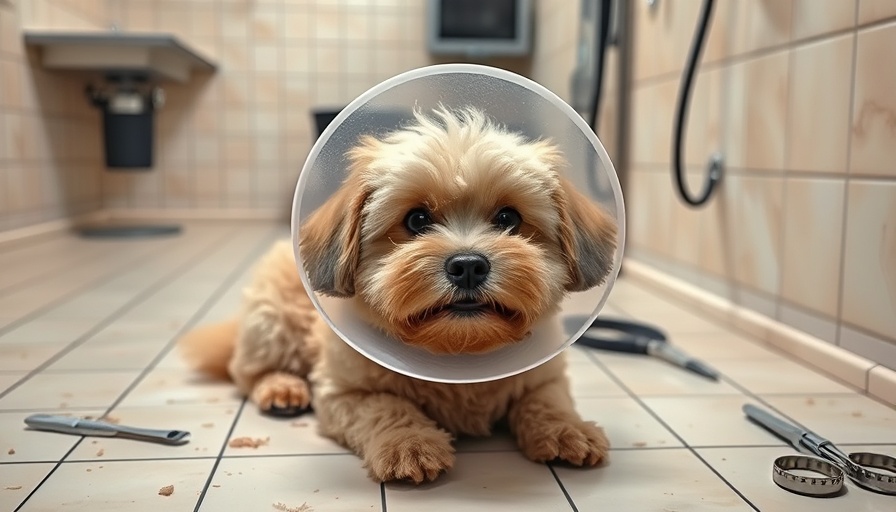
Understanding Your Dog’s Grooming Needs
Dog grooming is an essential part of pet care that not only keeps your furry friend looking their best but also ensures their overall well-being. For many pet lovers, grooming is much more than a beauty regimen; it’s a bonding experience that can enhance trust between you and your pet. But for dogs, especially those with sensitive paws, grooming can sometimes lead to anxiety and resistance.
In 'Trimming an anxious dog's paws with scissors,' the discussion dives into the delicate process of dog grooming, uncovering key insights that sparked deeper analysis on our end.
Calm Approaches to Grooming
In the short clip titled “Trimming an anxious dog's paws with scissors”, we witness the delicate process of paw grooming without restraints. This gentle approach highlights the importance of understanding a dog’s needs and behaviors. Whether it’s learning to use treats as positive reinforcement or giving soft praises during the process, creating a calm atmosphere can transform grooming from a stressful chore into a pleasant routine.
The Sensitivity of Paws
Dogs’ paws are particularly sensitive due to the various nerve endings located there. Many pet owners might be surprised at how much sensation dogs have in their paws! This highlights the necessity for awareness when trimming nails or trimming fur around sensitive areas. Using blunt scissors, as demonstrated in the video, is also a testament to how careful attention and the right tools can make all the difference.
Beyond Pampering: Health Benefits of Grooming
Regular grooming goes beyond aesthetic appeal; it contributes significantly to a dog’s health. By trimming their fur and nails, you can prevent discomfort and potential injuries, such as mats that can pull on their skin or overly long nails that can cause pain. The earlier you adapt your dog to a grooming routine, the better their comfort level will be during these sessions, leading to a healthier pet in the long run.
Practical Dog Grooming Tips
To ensure a stress-free grooming session, consider these tips:
- Start Slow: Gradually introduce your dog to the grooming tools before using them.
- Provide Treats: Keep some of their favorite treats handy to reward positive behavior.
- Keep Sessions Short: If your dog shows signs of anxiety, keep grooming sessions short and sweet.
- Use Calm Voices: Your tone of voice can significantly impact your dog's behavior during grooming.
Why Grooming Matters for Pet Wellness
Maintaining a regular grooming schedule can fundamentally enhance your pet's quality of life. It’s about creating a routine that works for both you and your dog, one that reinforces trust and security. Plus, it’s a great way to monitor your dog’s health—regular grooming allows you to spot abnormalities on their skin or in their paws, making it easier to address any potential concerns promptly.
If your dog can be anxious during grooming, remember that patience is key. Employ the right techniques and tools, and you’ll foster a comfortable environment for your furry friend. Embracing these soft grooming strategies can significantly positively impact your dog's mindset around grooming.
 Add Row
Add Row  Add
Add 




Write A Comment